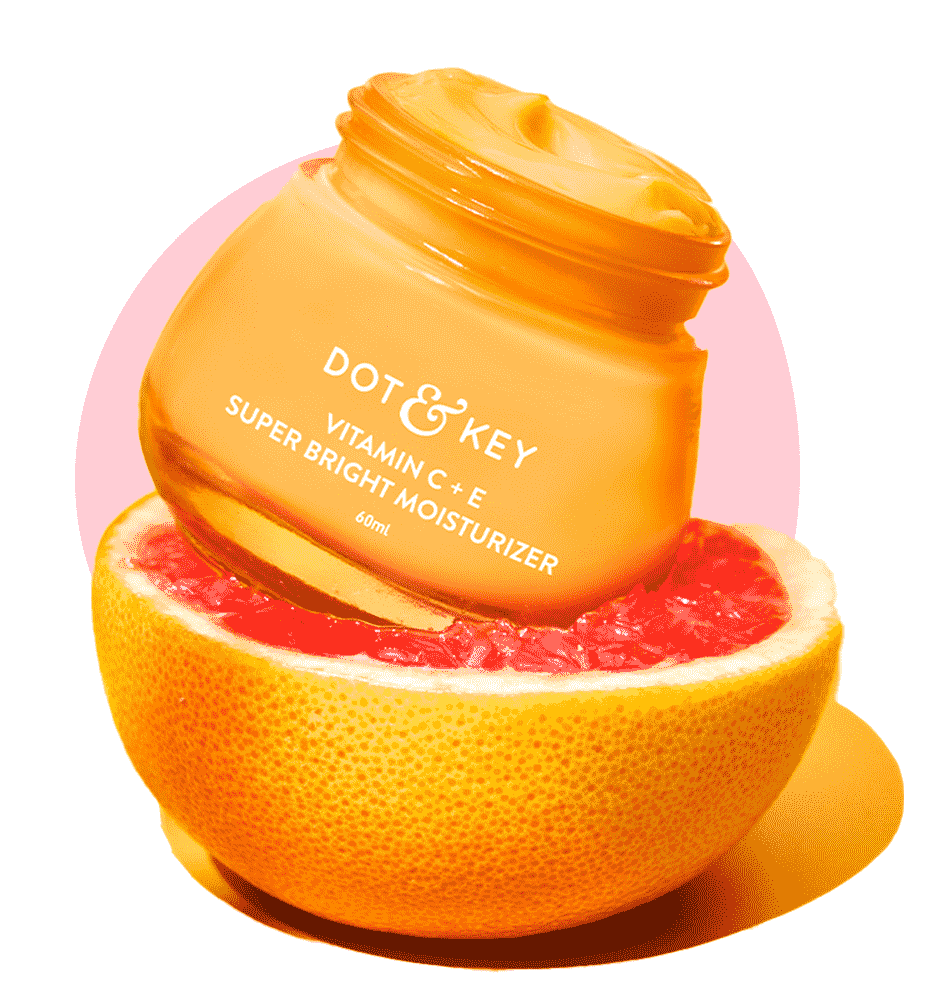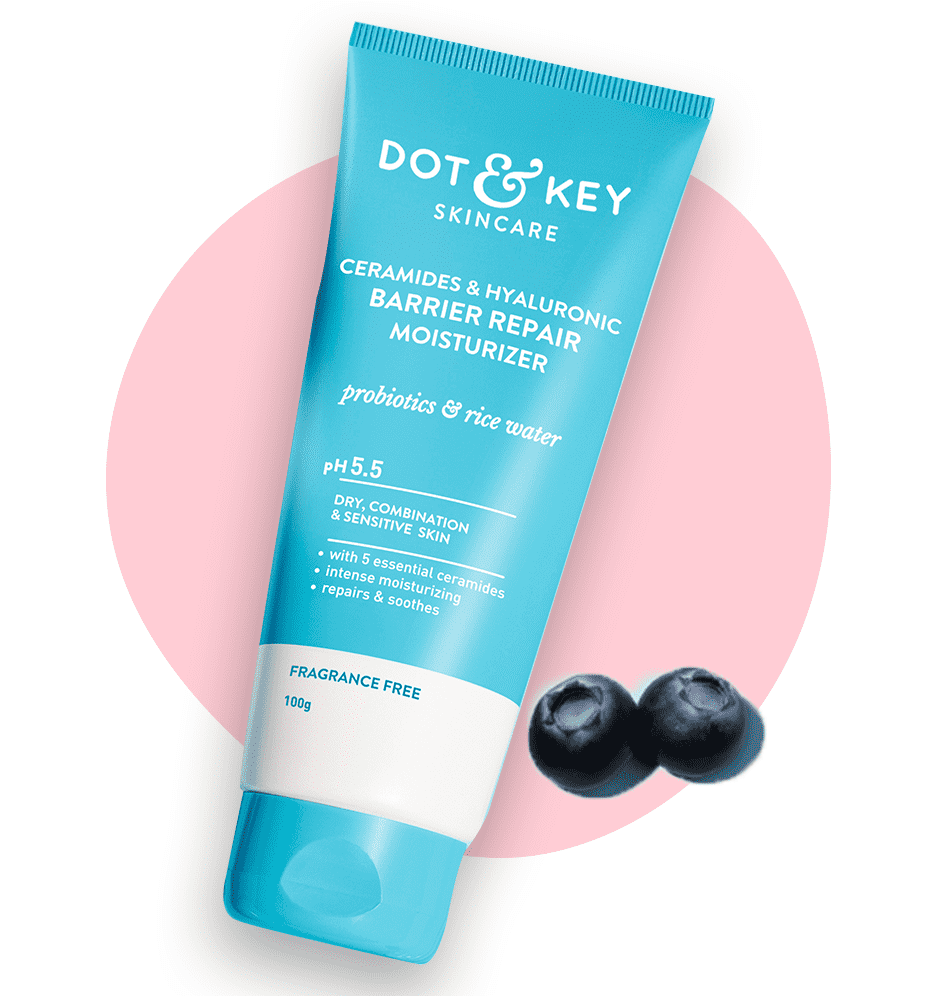
Introduction
Sunscreen, the most important step in the skincare routine. It protects your skin from the harmful effects of the sun & UV rays, prevents premature ageing & sunburn, & reduces the risk of skin cancer.
In this article, we will delve deeper to understand the benefits of sunscreen & answer some common questions such as “How does sunscreen work?”, “How do you apply sunscreen?”, “How do you choose the right sunscreen?” “ How to maintain healthy skin?”, & many more.
Contents
What is Suncreen?
Sunscreen = Sun-protected skin!
Research indicates that exposure to UV radiation (UVA & UVB) & infrared rays emitted from the sun cause acute & chronic skin damage. Sunscreen prevents the skin from absorbing ultraviolet (UV) radiation, which can be harmful.
While no sunscreen can block UV radiation 100%, it does offer immediate & broad-spectrum protection against both types of UV rays. So, ensure your sunscreen has “broad-spectrum protection” that protects your skin from UVA and UVB rays.
How will you identify & understand UVA and UVB rays?
There’s an easy way to distinguish: UVA(geing) & UVB(urning). Although both rays have overlapping effects (i.e. both can cause burns and premature ageing), UVA rays usually cause fine lines and dark spots; UVB rays play the most significant role in producing skin cancers and sunburns.
How Sunscreen Works?
Sunscreens help prevent sunburn & broad-spectrum protection that protects your skin from UVA & UVB rays. When UV rays enter the skin, they disrupt your cells’ growth & function & break down your skin’s collagen and elastin.
There are two main parts to all sunscreens: active ingredient and emulsion. The active ingredients help in sun protection & come in two categories: UV absorbers and UV reflectors.
UV “absorbers” are chemicals that absorb UV radiation, essentially the UVA (penetrates the deeper layers of the skin & causes premature ageing) & UVB (causes sunburn and contributes to skin cancer risk) spectrum & protects skin from potential damage.
UV “reflectors” are mostly made up of zinc oxide and titanium dioxide, which absorb and scatter UV radiation.
By filtering out these harmful rays, sunscreens prevent damage to skin cells and reduce the risk of skin cancer.
Benefits of Sunscreen
To live a sun-safe life!
Regular use of sunscreen offers numerous benefits, including:
- Protects against UV rays: Minimizes skin barrier damage by offering broad-spectrum protection
- Decrease your risk of skin cancers & skin pre-cancers: Reduces the risk of Melanoma & Squamous Cell Carcinoma, types of skin cancer.
- Prevents Premature ageing: Prevents wrinkles, dark spots, sagging and age spots.
- Sunburn Prevention: Prevents redness, pain, itching & irritation caused by sunburns.
- Enhanced Hydration & Moisturization: Prevents dryness and maintains skin’s natural moisture balance.
- Improve skin texture & elasticity: Ingredients like peptides, niacinamide, & vitamin C help stimulate collagen production, keeping your skin healthy, youthful, & radiant.
- Reduces Hyperpigmentation: Reduce hyperpigmentation by preventing UV radiation from reaching the skin cells & causing damage.
- Prevents Sunspots: Reduces small, dark spots that appear on the skin due to sun damage.
- Prevents Melasma: Exposure to the sun’s rays can exacerbate melasma, brown or grey patches that appear on the skin. Wearing sunscreen can help prevent this condition from getting worse.
- Protect your skin from environmental damage: Neutralizes free radicals generated by pollution & UV exposure.
Types of Sunscreen
There are two main types of sunscreen: Organic & Inorganic, replacing the previously used terms "chemical" and "physical", respectively (as per the International Nomenclature Cosmetic Ingredient (INCI) name)
- Organic Sunscreens: Sunscreens with organic UV filters such as UVA, UVB, and newer generation broad-spectrum (UVA + UVB) filters act as active ingredients that absorb UV radiation and convert it into heat, further released from the skin. Common ingredients include Salicylates, Octinoxate, and Octocrylene (UVB absorbers); Avobenzone (UVA1 absorber); Oxybenzone (UVB and UVA2 absorber); Bemotrizinol (Tinosorb S) and Bisoctrizole or Tinosorb M, which scatter, reflect, and absorb UV light.
However, the kind of sunscreen you use is a matter of personal choice and can be categorized based on texture, efficacy, natural ingredients, skin types, etc.
- Texture-based: Lotions, creams, gels, ointments, wax sticks, and sprays
- Systemic sunscreens: Ingredients such as β-carotene, α-tocopherols (i.e., vitamins A, C, and E), retinol, cica, watermelon, polyphenols, PABA, etc. have a systemic photoprotective effect.
It gets absorbed into the body & accumulates in the skin to protect it from the UV rays.
- Water-Resistant Sunscreen: Ideal for an active lifestyle, swimming or sweating, providing protection even when wet.
- Sunscreen for Sensitive Skin: Formulated with natural ingredients & without irritants, suitable for sensitive or reactive skin.
- Tinted Sunscreen: A combination of major sun protection with a tint that matches your skin tone.
- Sunscreen for Different Skin Types: Tailored formulations for oily, dry, and combination skin types.
Sun Protection Factor
SPF stands for Sun Protection Factor, which measures the protection from UVB rays of the sun, which cause sunburn. There is a common misconception that 'Higher SPF numbers mean greater protection from UV rays.' But no sunscreen can block all UV rays.
However, in 2007, the FDA proposed that the expansion of SPF be changed to "sunburn protection factor" to indicate that it is only an index of protection against sunburn caused by UVB rays.
For example, SPF 15 blocks 93% of UVB rays, SPF 30 blocks 96%, and SPF 50+ blocks 98%. Staying between 30 & 50+ SPF—is sufficient to keep yourself sun-protected.
How to determine SPF:
UVB sunburn protection factor (SPF) = (Minimal Erythema Dose (MED) of photoprotected skin) / (MED of unprotected skin)
The grading system for SPF:
Low: SPF 2 - 15
Medium: SPF 15 - 30
High: SPF 30 - 50
How to Apply Sunscreen
The shortest possible answer is: Apply generously!
Here's how:
- Amount: 3 full fingers or half a teaspoon to protect your face and neck.
However, 1 ounce is typically sufficient to cover the entire body. You may need to adjust the amount based on your body size & body hair.
- Application: Apply it to dry skin approximately 15 to 30 minutes before heading outside to allow it to be fully absorbed.
- Reapplication: Reapply sunscreens every 2 hours, especially after swimming or sweating. However, if you work indoors & are not near windows, a second application might not be necessary. Pay attention to how often you go outside.
However, keep an extra bottle of sunscreen at your desk, just in case. Even a brief walk during lunch can expose your skin to harmful rays.
- Protect your Lips: Repeated exposure to UV rays darkens lips & causes discolouration. It is also called Lip Tan. Apply a lip balm that contains sunscreen with SPF 30 or higher.
- Coverage: Don’t forget often-missed areas like ears, neck, and the tops of feet. Apply sunscreen to all areas of skin that are not covered.
Questions that people often ask: How to layer the Sunscreen? Or Should sunscreen come before or after other products?
- Layering: As long as your sunscreen is at least SPF 30 & offers broad-spectrum protection, the order of your skincare products hardly matters. Some people prefer to apply it on bare skin before makeup, while others apply sunscreen over makeup. Find what works best for your routine.
If you have concerns about layering specific products, consult your dermatologist.
Products
How to Choose the Right Sunscreen
But first, understand the factors that affect your photosensitivity.
Age: As you age, it becomes harder for your skin to repair itself from the effect of UV damage that further causes wrinkles & fine lines.
Climate: Sun protection is a must in climates that carry a high risk of sun damage, especially during hot summer months or regions where summer extends more than usual.
However, UV rays can wreak havoc on your skin even on a cloudy day or winter, so be sure to wear SPF 365 days & 366 in case of a leap year!
Choosing the right sunscreen depends on your skin type, your daily activity and specific needs:
- For Oily Skin: Ultra-light, oil-free, & non-comedogenic formulations that won’t clog pores & blend seamlessly.
- For Dry Skin: Light water cream texture formulated with nourishing ingredients that provide long-lasting hydration.
- For Combination Skin: Lightweight gel formulations provide oil-free hydration & instant cooling sensation.
- For Sensitive Skin: Non-comedogenic and fragrance-free formulations that calm redness & irritation caused by sun exposure & are quick-absorbing.
Also, consider the following factors while choosing the right sunscreen:
- For Everyday Protection: Look for the sunscreen with SPF 50+ PA ++++ formulation enriched with Vitamin C & Niacinamide that boosts your glow while providing broad spectrum protection with zero white casts.
- Mostly Indoors: If you’re spending most of your day indoors, whether in an office or WFH setting, especially in front of a screen that emits blue light (HEV) and UVA/UVB rays, choose an ultra-light & non-greasy sunscreen with broad-spectrum UV, IR & Blue light protection.
It is comfortable to wear throughout the day.
It provides enhanced protection against UVB rays & broad-spectrum protection for up to 80 minutes or more.
Look for Sunscreens with Antioxidants:
- Vitamin C: Neutralizes free radicals, boosts glow, & promotes collagen production.
- Vitamin E: Protects the skin from UV damage & supports its natural repair process.
- Blueberry: Checks free radical damage for healthy skin texture.
- Ceramides: Strengthens skin's barrier
- Niacinamide or Vitamin B3: Fades acne scars & sun-induced dark spots.
- Cica: Calms redness & inflammation.
- Watermelon: Controls excess oil & provides instant cooling sensation
- Lime: Rich in flavonoids, checks & repairs damage caused by free radicals
- Multi-Vitamins: Improves the effectiveness of UV filters to deliver better sun protection
Common Myths and Misconceptions
- "Sunscreen is Only for Sunny Days": Regardless of weather, climate or season, sunscreen is just as important as your daily 3ltrs. Of water!
UV rays can still penetrate clouds and cause damage to your skin if you’re exposed to light from the sun (daytime).
- "People with Dark Skin Don’t Need Sunscreen": Everyone under the sky, regardless of skin tone, is at risk for sun damage and skin cancer.
People with a darker skin tone have more Melanin in their skin cells that prevents skin damage from UV rays but is not blocked. So, Melanin will not protect your skin from extreme sun exposure or block the UVA rays that cause premature skin ageing and wrinkles.
- "Sunscreen Causes Vitamin D Deficiency": Vitamin D is a vital nutrient for human health, and the body makes it easily through exposure to sunlight.
However, moderate sun exposure of just 5 to 30 minutes daily, as suggested by dermatologists, combined with a healthy diet and supplements, ensures adequate vitamin D levels.
It's important to reapply sunscreen every 2 to 4 hours to ensure continuous protection.
Sunscreen expires naturally, just like every other skincare product. Its active components can lose their effectiveness & ability to protect the skin over time. So, using an expired sunscreen is definitely not recommended!
Safety and Side Effects
While sunscreen is generally safe, some individuals may experience side effects such as:
- Allergic Reactions: Look for non-comedogenic formulas if you have sensitive skin.
- Eye Irritation: Avoid applying sunscreen too close to the eyes.
- Ingredient Concerns: Choose products free from parabens, SLS/SLES, mineral oils & synthetic fragrances.
- Effectiveness: Select sunscreens that are clinically effective & have natural ingredients
- Leaves no residue: Choose an ultra-light sunscreen that leaves no white cast or residue that potentially clogs pores and further causes breakouts.
Expert Tips and Recommendations
For optimal sun protection:
- Apply sunscreen every day, regardless of the weather.
- Ensure even coverage and sufficient quantity.
- Use hats, sunglasses, and protective clothing in addition to sunscreen.
- Read the labels carefully
- Consider using sunscreen that has broad spectrum protection (UVA, UVB & Blue light filters)
- Customize your skincare routine & choose the right sunscreen based on your skin type & concerns
- Choose sunscreen enriched with Vitamin C+E, as it is for all skin types
- If you have a damaged barrier or dehydrated skin, go for the one infused with ceramides & blueberry
- If you have oily or acne-prone skin, add cica+niacinamide sunscreen to your routine
- If you are one with combination skin, opt for hyaluronic-infused sunscreen for oil-free hydration
FAQs
Q: Can I use last year’s sunscreen? A: Sunscreens typically have a shelf life of 2-3 years, but always check the expiration date.
Q: Is a higher SPF always better? A: Higher SPF offers more protection, but SPF 30-50 is generally sufficient for most people.
Q: Can I mix sunscreen with moisturizer or foundation? A: It’s better to layer products rather than mix them to ensure even coverage and effectiveness.
Conclusion
It is a well-known fact that Unprotected exposure to UV rays = Skin Cancer.
Using sunscreen can minimize both immediate and long-term sun damage, reducing the risk of skin cancer. In addition to applying a broad-spectrum, water-resistant sunscreen with SPF 30, 50, or 50+, it is advisable to wear sun-protective clothing, a wide-brimmed hat, and sunglasses.
References
- National Library Of Medicine: Benefits of Sunscreen
- Skin Cancer Foundation: Benefits of Sunscreen
- Indian Journal of Dermatology, Venereology & Leprology: Sun Protection Factor (SPF)
- American Academy of Dermatology Association: How to Choose the Right Sunscreen
Highest: SPF >50



















